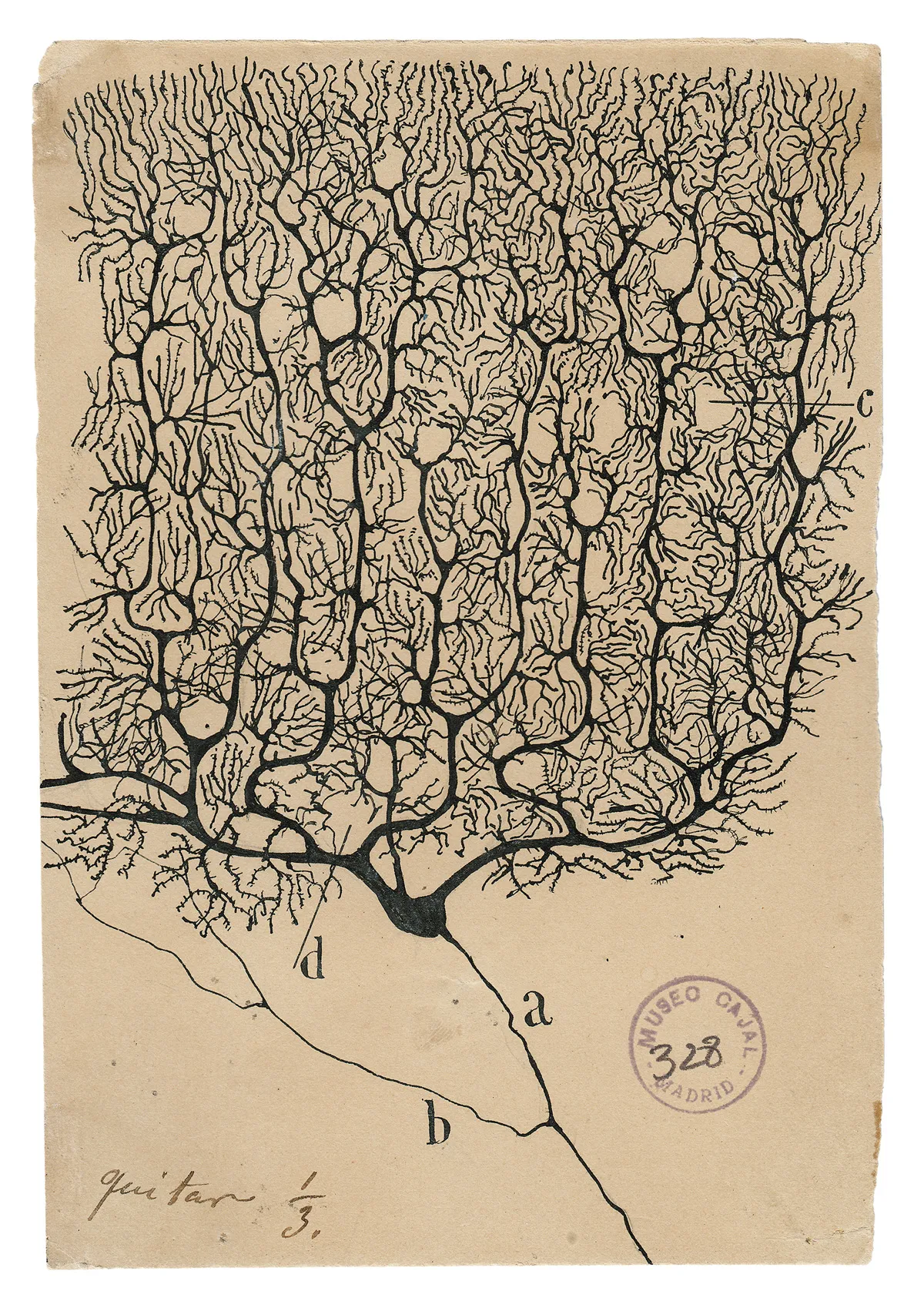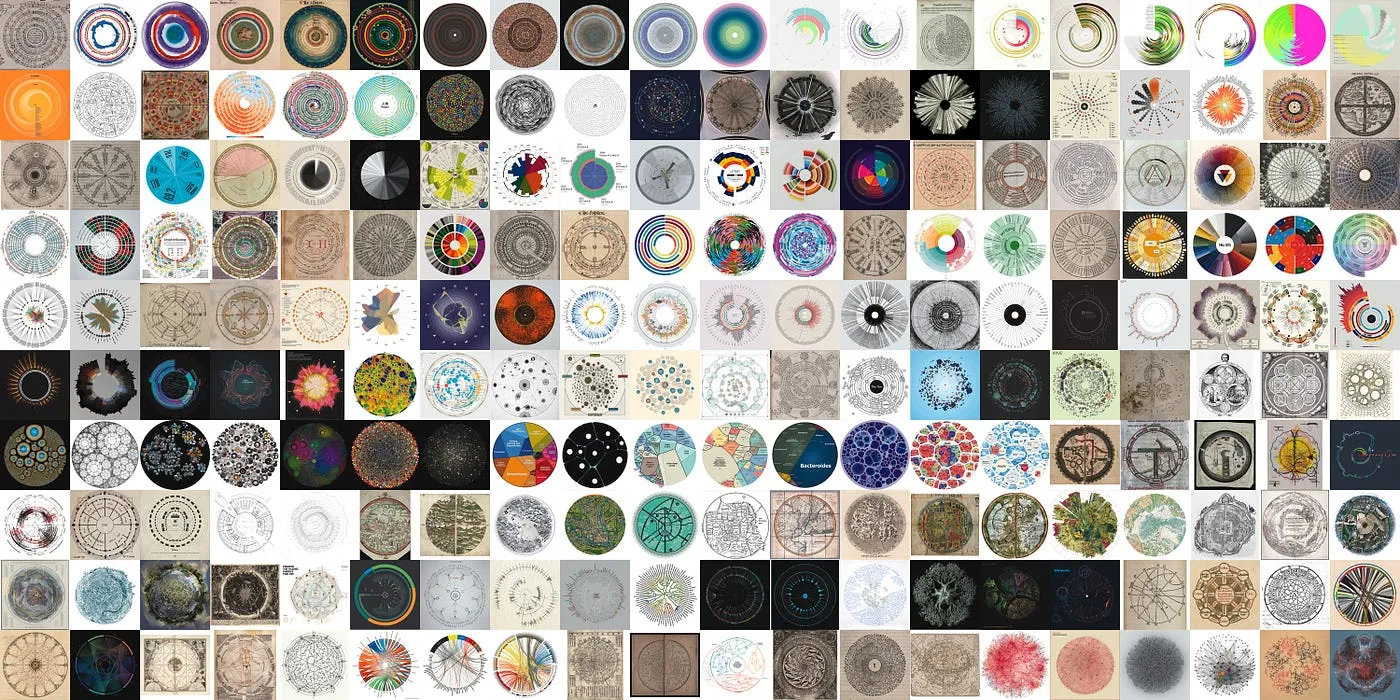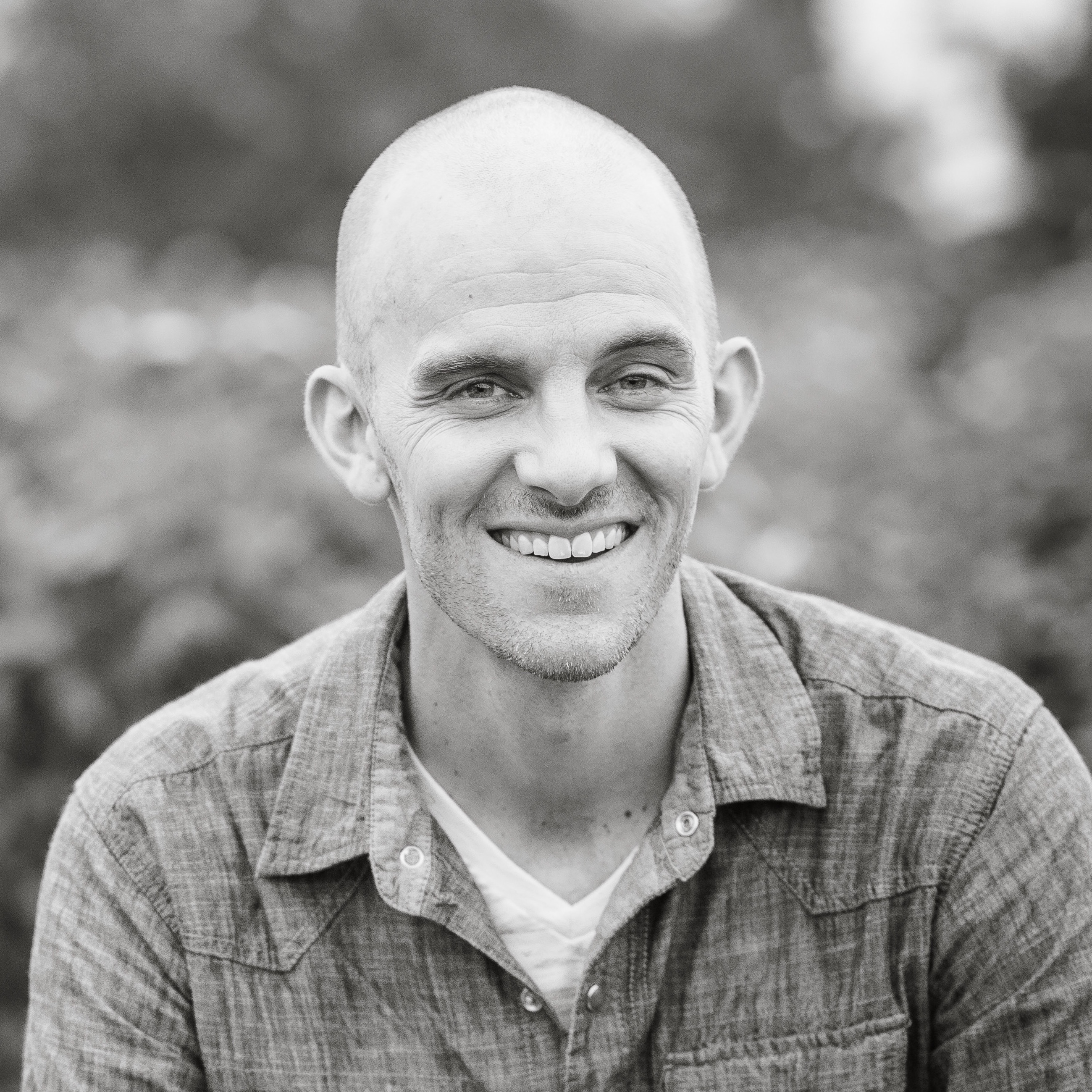Last week’s newsletter was about branching realities.
It started out like this:
Lynda Barry is a cartoonist and professor at UW-Madison who teaches a class called The Unthinkable Mind. In the class, Barry combines neuroscience, psychology, and drawing to help students build the skill of creativity and apply it to their life’s work. Last week I saw this Instagram post by Barry and it reminded me of the incredible link between art and science. Santiago Ramón y Cajal, widely considered to be the father of neuroscience, also understood this connection. Cajal’s work drew inspiration from both the sciences and the arts, and his drawings of the brain beautifully communicate its complexities.
In addition to his work on circle visualizations, Manuel Lima has also worked with branching. In The Book of Trees: Visualizing Branches of Knowledge, Lima documents the use of tree diagrams from throughout history to categorize a wide variety of information:
I like how this work is both artistic and scientific. Referencing visuals and producing them ourselves has always helped us understand the world better. Branching in particular is helpful, I think in part, because it’s all around us. Its reproductions and reflections are seemingly endless, as Barry’s lesson plan highlights.
I’ve enjoyed watching Angie study medicine these past few months. To me, her notes look like works of art to and I’ll often ask her to send me pictures of them, like this one, which of course reveals some branching:

As we wrap up 2024, thinking about branching has me thinking a lot about the big decisions we make in life. Looking into our past, we might envision a fork in the road that was created in the moment of deciding—one path branching off to the left and another off to the right, each leading to a separate reality that was created by our choice.
Or maybe we can envision a separate reality that was created simply by circumstance, as is the case in the 1998 movie Sliding Doors, where Gwyneth Paltrow’s character experiences two alternate realities based on whether or not she successfully catches a subway train. Throughout the rest of the movie we see her life play out along these two separate paths.
The idea of alternate realities has always fascinated me. Even more fascinating is the theory suggesting they may actually be real. The many-worlds interpretation of quantum mechanics proposes that every possible outcome of every event creates a new universe or world that runs parallel to our own. Physicist Aaron O’Connell talks about the feasibility of this idea in his 2011 TED Talk.
Alternate realities have long been the subject of some of the best science fiction. If you love speculating about these branching realities as much as I do, here are some great stories to check out:
Ted Chiang has a short story entitled “Anxiety Is the Dizziness of Freedom,” from his book Exhalation, that looks at this idea. It’s somewhat of a redemption story in which characters use a device called a prism that allows them to communicate with versions of themselves from alternate realities—realities that stem from divergent past decisions the characters have made. You may already be familiar with Chiang’s work from the movie Arrival, which was based on his short story “Story of Your Life,” from Stories of Your Life and Others. It dawned on me that one of my family’s favorite holiday movies, It’s a Wonderful Life, also deals with alternate realities. Blake Crouch’s book Dark Matter (recently made into an Apple+ series) was first described to me as an “It’s a Wonderful Life” for the 21st century. And then, of course, there’s a wealth of amazing works by the Spanish-speaking world that dive into choice and the alternate realities it produces. Check out Jorge Luis Borges’s “The Garden of Forking Paths” (also see this TED Ed video on his mind-bending work) and the Spotify podcast Case 63 (based on the Chilean Caso 63).
You can read the whole newsletter here.


